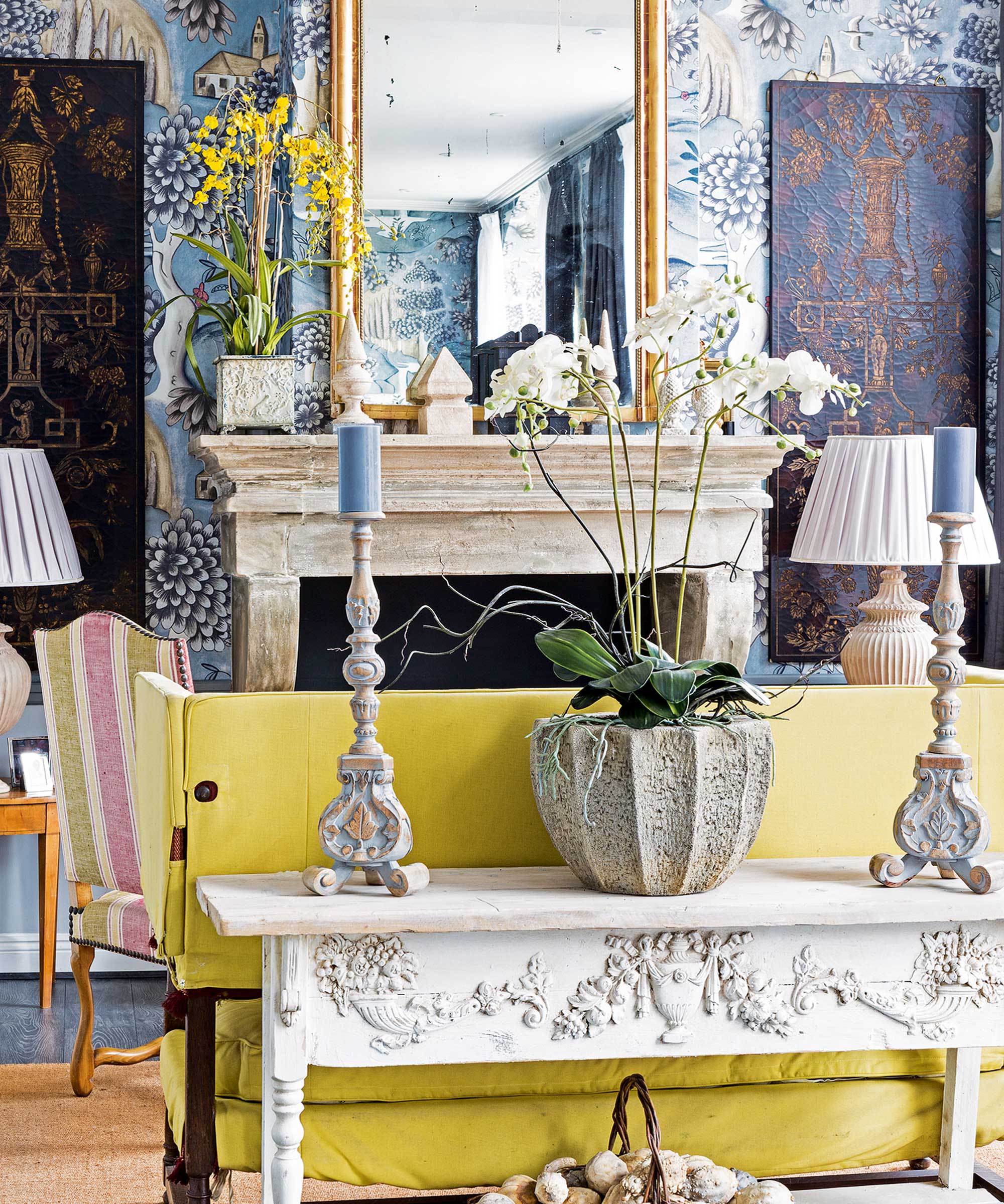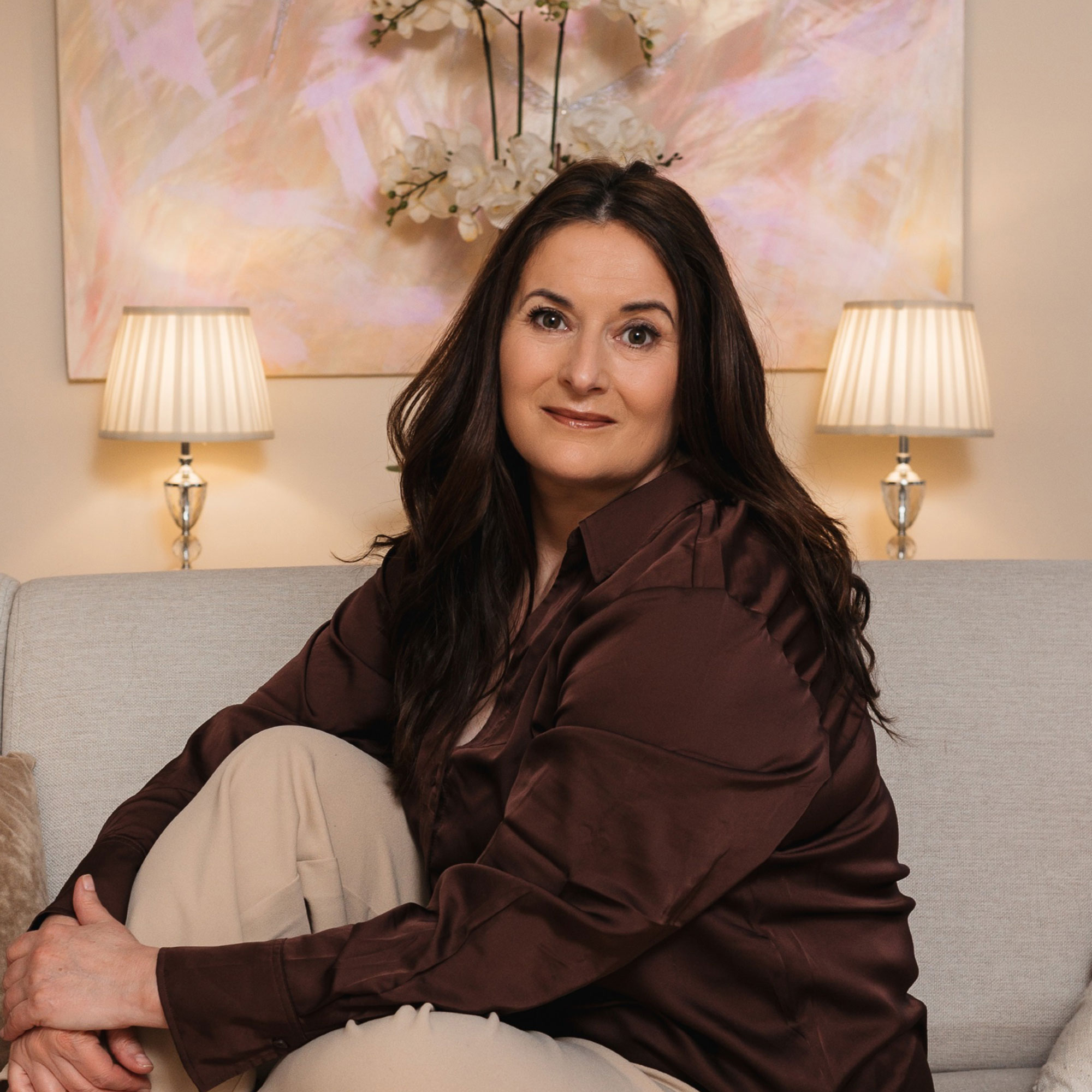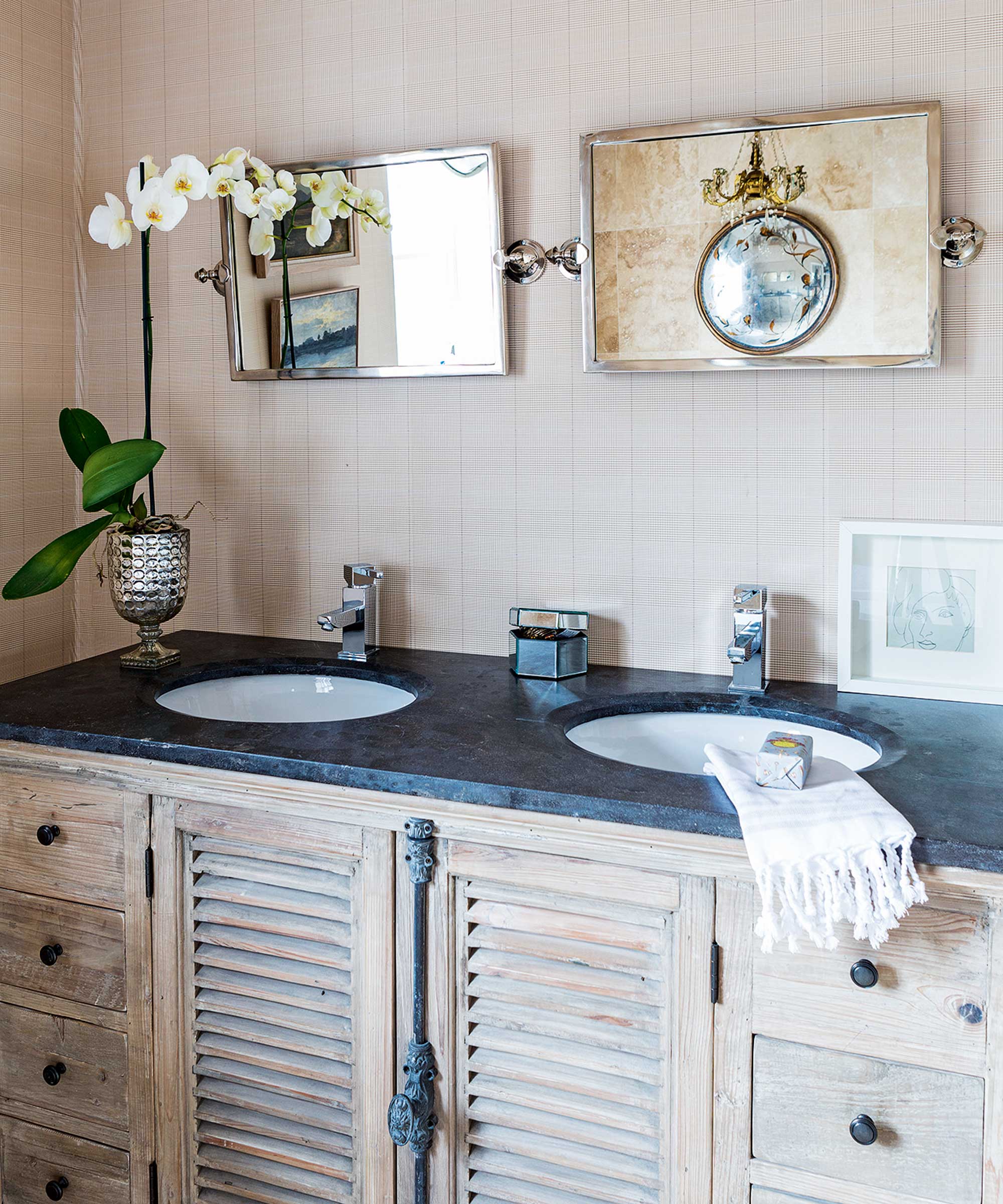This is how to use the orchid symbol in Feng Shui inside your home
How to use the orchid symbol in Feng Shui to bring calm and good fortune to your living space...


Learning how to use the orchid symbol in Feng Shui is a great place to start if you want to bolster positive energy inside your home. You have probably heard of the ancient Chinese tradition, which focuses on creating living spaces that are in such alignment with nature to promote harmony and balance, but you may be less aware of how it often enlists the subtle powers of certain flowers.
One of these is the orchid, which has several important meanings and is an inspiring symbol to incorporate in many parts of your home. We will explain the best ways to enhance your interiors either with the plant itself or a motif of the flower, as well as the best spots to position it to elicit the most beneficial results.
What's more, if you're wondering what is Feng Shui, then you're in the right place for an expert-led introduction to the popular centuries-old approach to home design. Because your living spaces – from the decor you choose to the layout of your rooms and the level of clutter – can make a big difference to your well-being.
How to use the orchid symbol in Feng Shui – what is the practice?
Feng shui is an ancient Chinese tradition based on the idea that we can design our homes with harmony and balance in mind. 'It is a wisdom that recognizes that our well-being is always under the influence of our surroundings,' says Amanda Gibby Peters, a Feng Shui consultant and the founder of Simple Shui. 'It teaches us how to understand energetic patterns within our spaces so that we can shore up as much positive "chi" in our environment as possible, in order to live a healthier, happier life.'
Peters notes that it is rooted in the idea that we are just like plants. 'When placed in an optimal environment, our own chances for success – depending on what that means for each of us – are inevitable,' she continues. 'The reason Feng Shui is important is that when we plant ourselves in the best possible surroundings, we align ourselves with what we need to thrive physically, emotionally, mentally, financially and spiritually.'

Orchid symbol in Feng Shui and meaning
There are many symbols that you can enlist to enhance your living environment – including plants with particular Feng Shui meanings. One of the most popular is the orchid. 'It is considered a noble plant, symbolizing beauty, perfection, and love,' explains Peters. 'They bring family and fertility luck, and this “luck” extends to growth and inviting new opportunities our way.'
Indeed, it makes a perfect present at certain key life stages. 'The orchid, due to its long-lasting bloom, brings an essence of longevity into a home,' notes Suzanne Roynon, Homes & Gardens' Feng Shui expert and founder of Interiors Therapy. 'I like it best as a symbol of abundance and will always gift an exquisite white orchid to friends when they move into a new house or apartment for an auspicious new beginning.'
Design expertise in your inbox – from inspiring decorating ideas and beautiful celebrity homes to practical gardening advice and shopping round-ups.
However, it also makes the ideal treat to give yourself if you're going through a tough time. 'If you could only choose one flower to display to enhance positive Feng Shui energy in your home, the orchid is a beautiful multi-tasker,' points out Diana Hathaway, an interior and Feng Shui designer. 'It is revered for its calming energy and is also prized for enhancing harmony.'

Suzanne is a Feng Shui consultant, interiors therapist and author of Welcome Home, How Stuff Makes or Breaks your Relationship – available at Amazon. She specializes in understanding the energetic impact of homes and certain possessions may have on all aspects of life, health and relationships, and the ways in which ‘stuff’ can actively prevent people and families from thriving and enjoying the lifestyle they deserve.
How to use the orchid symbol in Feng Shui in your home

Just like with Feng Shui in general, how you use the orchid symbol in your home is very much up to you. 'You can place real orchids around your home or include the plant as decorative elements in your living spaces,' suggests Victoria Cedeno, interiors expert at Zinus. Perhaps it's the plant featured in artwork that hangs on the wall or on fabrics. This abstract orchid painting, at 1st Dibs is a beautiful option, or if you would prefer a more life-like illustration, this antique botanical orchid print from 1st Dibs would be ideal.
However, if you do opt for an actual orchid – you can get one delivered to your doorstep via The Sill – then just make sure you properly care for it. 'Though they are low-maintenance, to maintain the positive energy you need to give extra attention to keep your plant healthy,' insists Hathaway.
Despite the upkeep, there's a real opportunity to have fun with orchids. Roynon notes you can use the plant in different colors to support other aspects of Feng Shui – including yellow for stability, as well as white for opportunities. Additionally, orchids will be aesthetically pleasing in even the barest of spaces. 'They offer a delicate and feminine touch, and make the perfect addition to windowsills or darker spaces like a cloakroom,’ adds Cedeno.
One of the best features of the plant is its versatility. 'They work well anywhere, but are ideal near the front door, on your office desk or in the dining room,' advises Peters.
FAQs
How can I improve the Feng Shui of my entryway?
'One of the most important ways to add Feng Shui in your home is by looking at your front door,' says Peters. 'It provides a first impression and is how we greet the world. Imagine that I am coming to your house and am about to knock on your door – what am I likely to think? Whatever just came to your mind provides a clue as to how your entranceway is probably influencing the way you feel about your home as a whole.'
What's an easy way to boost my home's Feng Shui?
Think about Feng Shui in the bedroom and the kitchen. 'The former is where we sleep, bare our bodies sensually, and return ourselves to equilibrium,' points out Peters. If you don't love your bedroom, prioritize thinking why and how the space can be improved. Similarly, consider how your kitchen makes you feel. 'This room in Feng Shui is synonymous with wealth – which is our money but also our family and friends, our resources as well as access to opportunities, and our health,' she adds. Feeling at ease in both of these spaces is key.
Then consider Feng Shui in the living room. 'This includes ensuring you have enough seating to accommodate guests, with chairs positioned so that there is space for air to flow behind them,' explains Gisela Lancaster, head of buying at Sofology. This is one of the key elements to Feng Shui furniture placement. 'Additionally, your couch should be positioned opposite the entrance, and if your living room door is in the corner then consider positioning a corner sofa near the far end.'
Finally, Peters recommends doing an 'audit' of your spaces, which will often involve decluttering. 'Notice where your eye is drawn in each room and beware of low-level overwhelm – too much “stuff” in one space causes brain fatigue because the effort required to “process” all the information is exhausting,' she explains. Making space for positive energy is something Lancaster also encourages: 'Cramped arrangements can create a surplus of negative energy – think about the flow of both air and light, by opening windows frequently and choosing curtains that will allow light to penetrate the room.'
One spot where you should not have actual live orchids is the bedroom. 'This is because they, like some other plants, emit carbon dioxide at night and are therefore not ideal for sleep alongside,' warns Roynon.
Lauren Clark is a freelance writer and editor with more than eight years of digital and print journalism experience. She covers all aspects of lifestyle, specialising in health and wellness topics, and her work has previously been published in titles such as Women's Health, The Times, Daily Telegraph, Stylist, Woman & Home, Grazia and Dazed.
